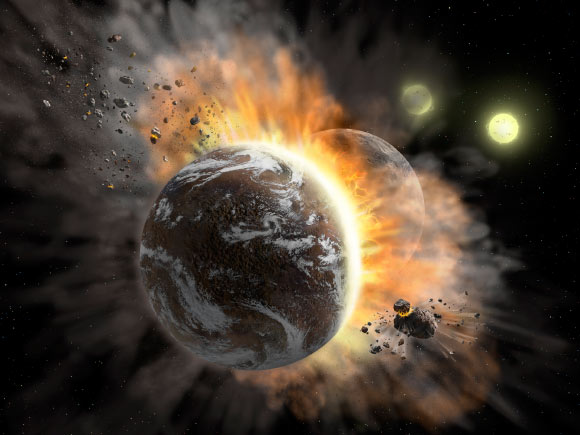Astronomers using NASA’s Stratospheric Observatory for Infrared Astronomy (SOFIA) have observed an unusually warm, dusty debris disk around BD +20 307, a binary star system located 300 light-years away in the constellation of Aries. Their results suggest that an extreme collision between two rocky planetary bodies is the most likely origin for the warm dust in the BD +20 307 system.
Source: Sci News
BD +20 307, also known as HIP 8920 or SAO 75016, consists of two solar-type stars. They orbit a common center of mass every 3.42 days and are at least one billion years old.
Yet this mature stellar system has shown signs of swirling dusty debris that is not cold, as would be expected around stars of this age. Rather, the debris is warm, reinforcing that it was made relatively recently by the impact of two planet-sized bodies.
A decade ago, observations by several ground-based telescopes and NASA’s Spitzer Space Telescope gave the first hints of this collision when the warm debris was first found.
The new SOFIA observations revealed the infrared brightness from the debris has increased by more than 10% — a sign that there is now even more warm dust.
The results further support that an extreme collision between rocky exoplanets may have occurred relatively recently.
“The warm dust around BD +20 307 gives us a glimpse into what catastrophic impacts between rocky exoplanets might be like,” said lead author Maggie Thompson, a graduate student at the University of California, Santa Cruz.
“We want to know how this system subsequently evolves after the extreme impact.”
Planets form when dust particles around a young star stick together and grow larger over time.
The leftover debris remains after a planetary system forms, often in distant, cold regions like the Solar System’s Kuiper Belt.
Astronomers expect to find warm dust around young stellar systems. As they evolve, the dust particles continue to collide and eventually become small enough that they are either blown out of a system or pulled into the star.
Warm dust around older stars, like our Sun and the two in BD +20 307, should have long since disappeared.
Studying the dusty debris around stars not only helps astronomers learn how exoplanet systems evolve, but also builds a more complete picture of the history of our own Solar System.
“This is a rare opportunity to study catastrophic collisions occurring late in a planetary system’s history,” said co-author Dr. Alycia Weinberger, a staff scientist at the Carnegie Institution for Science.
“The SOFIA observations show changes in the dusty disk on a timescale of only a few years.”
The findings appear in the Astrophysical Journal (arXiv.org preprint).
Source: Sci News

































Leave a Comment
You must be logged in to post a comment.